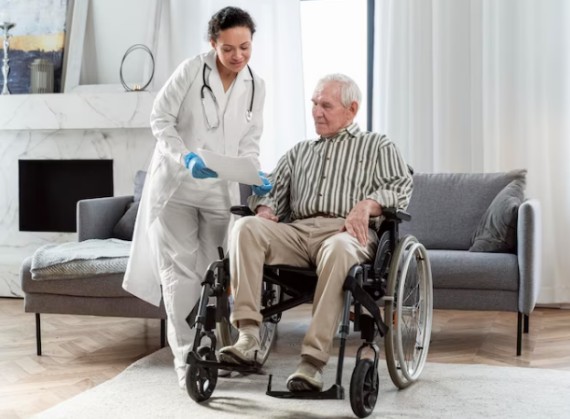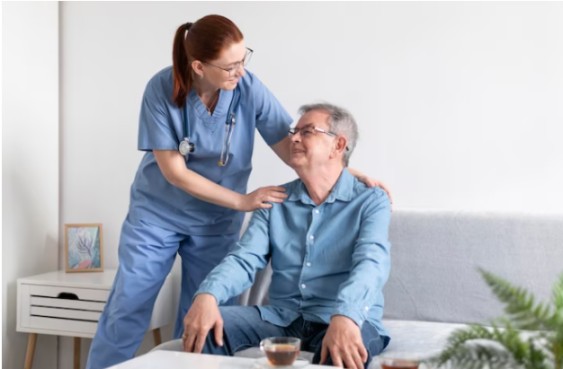The adventure from the health center to the domestic is an important phase in an affected person’s recovery technique. It marks the transition from extensive medical care to greater unbiased and self-controlled healthcare.
Ensuring that this transition is seamless and properly managed is paramount for the patient’s basic well-being and long-term health. In this newsletter, we are able to explore the demanding situations related to the sanatorium-to-home transition and speak strategies to make it as smooth as possible.
The Hospital-to-Home Transition: A Crucial Phase
The clinic-to-domestic transition is a pivotal moment in a patient’s healthcare adventure. Whether someone is convalescing from a surgical procedure, dealing with a continual circumstance, or getting better from acute contamination, leaving the established surroundings of a medical institution can be both interesting and daunting.

The Significance of a Smooth Transition
The journey from the hospital room to the consolation of home marks a crucial turning factor within the recuperation system for patients. Referred to because of the sanatorium-to-domestic transition, this section holds mammoth importance as it may substantially have an effect on a patient’s well-being, adherence to remedy plans, and overall fitness results.
The procedure of transitioning from a medical facility to one’s own domestic surroundings is a way from a mere trade of location; it represents an essential length that necessitates careful navigation and committed help to ensure a continuing recovery.
You can visit Preferred Care at Home of South Alabama, a leading provider of in-home care services, that recognizes the pivotal role that the hospital-to-home transition plays in a patient’s recovery journey. Their specialized approach to care encompasses this transition, focusing on creating a seamless and supportive pathway from hospital to home.
Medication Management: A Key Component
One of the most considerable demanding situations through the clinic-to-domestic transition is medicine control. Patients leaving the health facility often find themselves prescribed multiple medications, every with its very own dosing timetable. This complexity can lead to confusion and errors, which could have critical consequences.
To cope with this project, healthcare vendors have to simplify medicine regimens every time possible. Combining medicinal drugs when suitable, prescribing extended-launch formulations, or decreasing the number of everyday doses can assist in easing the load on patients.
Additionally, the usage of tablet organizers or virtual remedy control apps can assist sufferers in retaining the music of their medicinal drugs appropriately.
Medication reconciliation is another critical step in making a seamless transition. This entails evaluating the medicines a patient takes within the hospital with the ones prescribed for domestic use. Any discrepancies need to be resolved to prevent doubtlessly dangerous interactions or omissions.
The Role of Care Coordination
Effective care coordination is at the heart of a hit clinic-to-home transition. It includes clear communique and collaboration amongst all healthcare vendors worried about the patient’s care, which includes the clinic workforce, number one care physicians, professionals, and home healthcare organizations.
A comprehensive care plan has to be advanced earlier than the patient is discharged from the medical institution. This plan needs to outline the patient’s analysis, remedy plan, and observe-up care necessities.
It has to also specify any necessary home care offerings, such as bodily remedy, wound care, or assistance with activities of everyday living. Care coordination extends beyond the sanatorium walls.
To ensure a seamless transition, the health facility care crew should speak with the affected person’s number one care company, sharing essential records approximately the patient’s condition, current treatment, and upcoming needs.
This permits number one care companies to assume obligation for the patient’s ongoing care and allows maintain continuity.
The Home Environment: A Critical Factor
The affected person’s home environment plays a significant position in their recuperation and protection during the transition. It is essential to assess the house for potential risks and make any essential modifications to accommodate the affected person’s wishes.
For example, if the patient has mobility problems, the home might also want ramps, handrails, or adjustments to the restroom to ensure certain protection and accessibility.
Similarly, if the patient calls for an oxygen remedy or specialized scientific device, preparations need to be made to house these needs domestically.
The Role of Technology in Transition
The introduction of telehealth and far-off monitoring technologies has revolutionized the manner of healthcare, especially at some point of transitions like the one from medical institutions to home.

Challenges in the Transition
Medication Management:
Patients leaving the hospital frequently have complex medicinal drug regimens. Keeping track of more than one medicinal drug, their dosages, and timing may be overwhelming. Errors in medication management can result in headaches and health facility readmissions.
Home Care Needs:
Some patients require ongoing hospital therapy or help with everyday activities when they return home. Coordinating these offerings and making sure they’re in the region can be difficult.
Communication Breakdown:
Effective communique between the sanatorium care crew and the affected person’s primary care providers is essential. Information approximately the patient’s situation, remedy plan, and observe-up care must be seamlessly transferred to ensure continuity of care.
Emotional Adjustment:
Leaving the hospital can evoke a number of feelings, along with tension and uncertainty. Patients might also fear their capacity to manage their fitness at home or fear a relapse of their condition.
Strategies for a Seamless Transition
Patient Education:
Healthcare vendors should paint together to create a comprehensive care plan. This plan should encompass info on medication control, compliance with appointments, and any vital domestic care offerings.
Care Coordination:
Healthcare vendors should paint together to create a comprehensive care plan. This plan should encompass info on medication control, compliance with appointments, and any vital domestic care offerings.
Medication Management:
Simplify medication regimens each time feasible. Use pill organizers or virtual medicinal drug management apps to help sufferers keep tune in with their medications. Conduct medication reconciliation to keep away from mistakes.
Home Environment Assessment:
Assess the patient’s domestic surroundings to discover and mitigate any ability dangers. Make vital adjustments to ensure their safety and comfort.
Telehealth and Remote Monitoring:
Leverage telehealth and far-flung monitoring technology to hold tabs on the affected person’s progress at home. Regular virtual test-ins can provide reassurance and catch potential problems early.
Emotional Support:
Recognize and cope with the emotional challenges sufferers may additionally face throughout this transition. Encourage them to reach out to support groups or intellectual fitness specialists if they want.
Caregiver Training:
If their own family contributors or caregivers will be assisting the patient at home, offer them proper education and resources. Ensure they apprehend the affected person’s wishes and the care plan.
Follow-up Care: Schedule and comply with appointments with the Health care provider shortly after discharge. This allows reveal the affected person’s progress and seize any complications early

Conclusion
The medical institution-to-domestic transition is an essential phase in a patient’s healing journey, and it comes with its precise set of challenges. However, with cautious plans, open communique, and the use of modern-day healthcare technologies, it’s viable to make this transition as seamless as feasible. Patients, caregivers, and healthcare carriers need to work together to make sure that the affected person gets essential aid and care inside the comfort of their personal home.